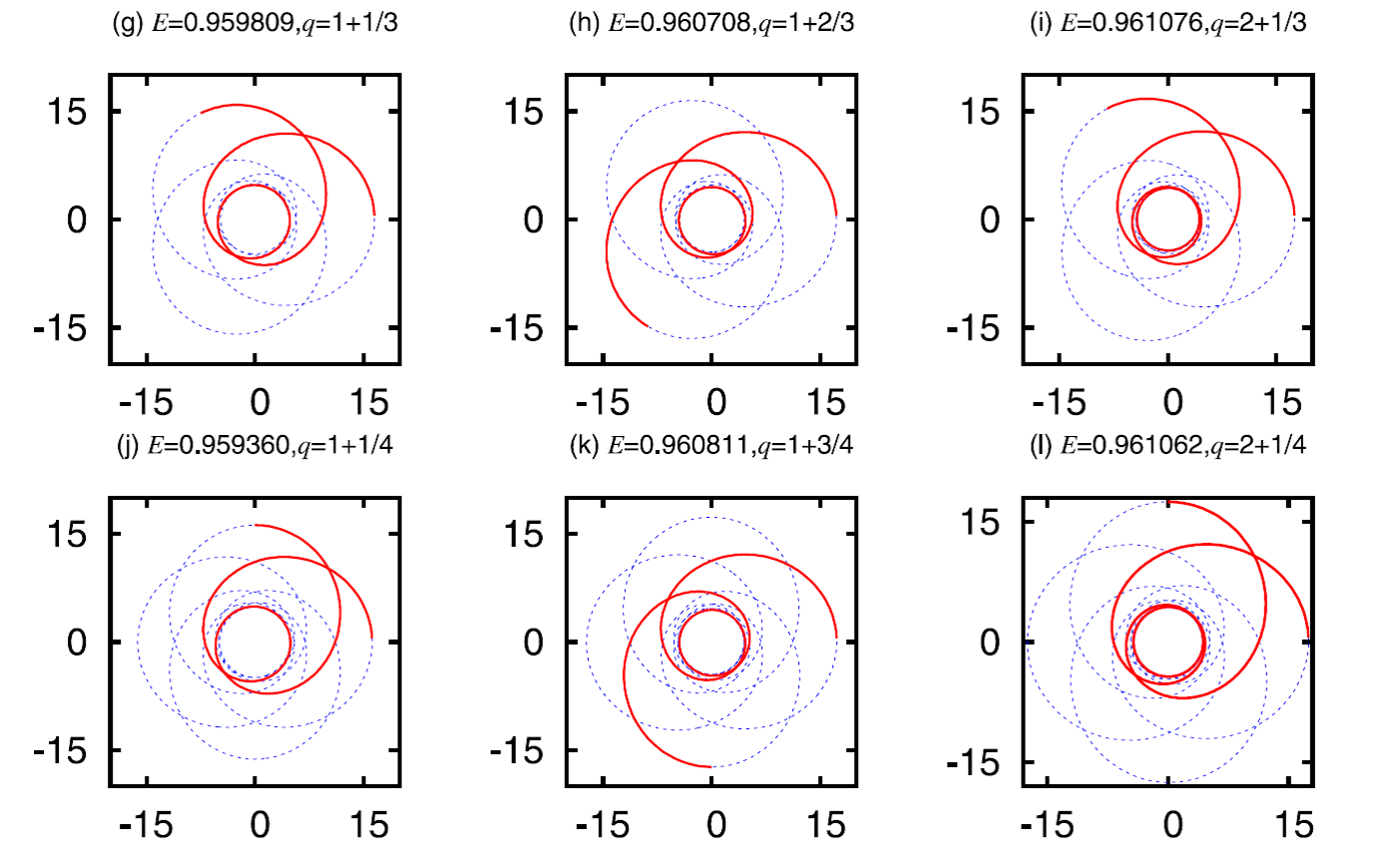The Orbital Dynamics around 4D Einstein–Lovelock Black Holes: Bound and Periodic Orbits
Black holes, predicted by the general relativity, play a crucial role for getting deep insight into our Universe, fundamental physics, and even spacetime singularities. In the last few years, one of the most important leaps in astrophysics and astrometry is to probe black holes directly by observing gravitational waves from a binary black hole merger and by imaging the supermassive black hole shadow with the Event Horizon Telescope. Meanwhile, these observations also open a new era for testing modified gravitational theories in the strong gravitational field. It is interesting to note that some influences of alternative theories on the strong gravitational field can present unique features and be well studied by using the orbital dynamical approach for a test particle’s motion around a black hole.
It is well known that periodic orbits are an extremely powerful tool to describe planetary and lunar motions, long-term dynamical evolution and stability of the Solar System, and galactic dynamics. During the adiabatic inspiral regime, a series of periodic orbits serves as a continuing transitional orbit and play a significance role in the research of the gravitational wave radiation. Given this fact, one classification describes periodic orbits through three integers (z,w,v), which represent zoom, whirl and vertex numbers respectively. Moreover, three integers correspond to a rational number q, which characterizes a closed periodic orbit with a given energy and angular momentum.
Inspired by the above idea, in a recent paper by LIN and DENG, a timelike particle’s periodic orbits around the 4-dimensional Einstein–Lovelock (4D-EL) black holes are investigated by employing the classification of the zoom-whirl structure with a rational number q (see Fig. 1). The 4D-EL theory is always considered as the one competitive candidate of unification theories in the low-energy limit. It is found that these periodic orbits around 4D-EL black holes have a higher or lower energy than the ones around Schwarzschild black holes during the inspiral stage of detecting the gravitational waves. It depends strongly on the sign of a coupling constant in the theory. These results might provide hints for distinguishing 4D-EL black holes from Schwarzschild ones by using the orbital dynamical approach in the strong gravitational field.

Fig. 1 Zoom-whirl periodic orbits with the rational number q (q=w+ν/z) in the orbital plane (xcosφ, xsinφ) around 4D-EL black holes. [Image by DENG]
This work is published in Physics of the Dark Universe, and is supported by the National Nature Science Foundation of China and the Strategic Priority Research Program of Chinese Academy of Sciences.